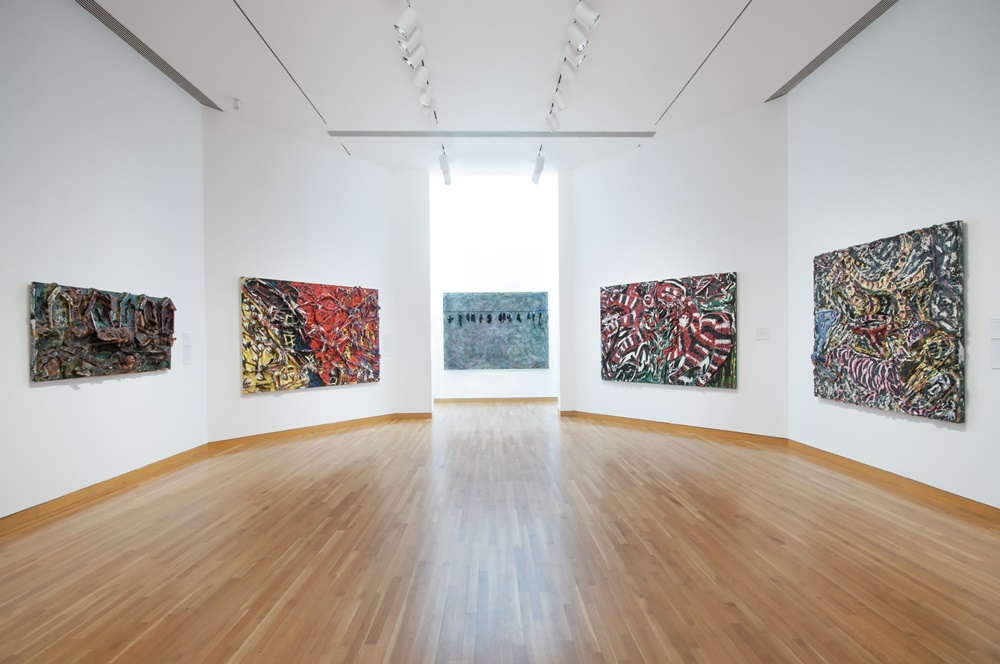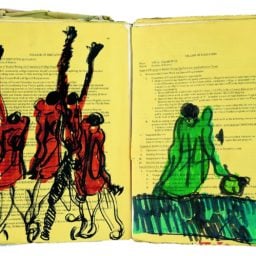At what point does an artist become so thoroughly absorbed into the mainstream art world that the term “outsider artist” no longer applies? And is it even a useful term in the first place, or does it only constrain our understanding of an artist’s work?
These questions are at the heart of the current conversation around self-taught artist Thornton Dial, who was born into poverty in Alabama in 1928 but lived to see his work acquired by some of the most august museums in the world.
The artist, who died in 2016, figures prominently in the Metropolitan Museum of Art’s exhibition “History Refused to Die: Highlights From the Souls Grown Deep Foundation Gift” (through September 23). The show takes its title from one of Dial’s monumental assemblages.
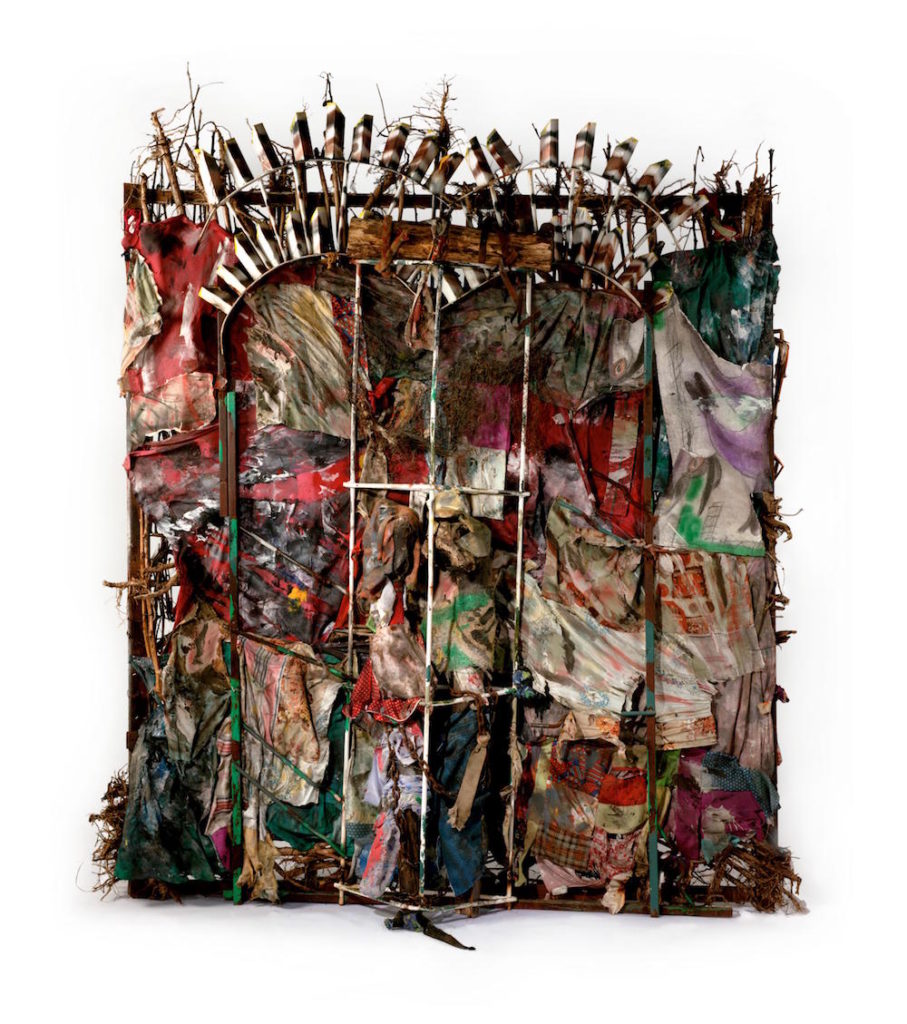
Thornton Dial, History Refused to Die (2004). The Metropolitan Museum of Art, New York, Gift of Souls Grown Deep Foundation from the William S. Arnett Collection, 2014. © 2018 Estate of Thornton Dial / Artists Rights Society (ARS), New York
Dial had almost no formal schooling and was sent to live with relatives in Bessemer, Alabama, when he was 12. Later on, he worked as a metalworker at a local railroad car plant. All the while, he was making drawings and, later on, increasingly ambitious assemblages. He fused painting with found objects such as rope, buckets, and other discarded quotidian artifacts like those he saw on front lawns growing up in the south.

Thornton Dial. Image via SoulsGrownDeep.org
In the early ’80s, after the factory where he was working shut down, Dial dedicated himself to art full time. His fortunes took a turn when he was introduced to William Arnett, a colorful curator, dealer, and art collector who became one of Dial’s greatest patrons and fiercest proponents.
Although Dial’s profile has been growing steadily for the past three decades, his market is only starting to catch up. He serves as a powerful example of how sometimes arbitrary categorizations can constrain an artist’s reputation—and their prices.
Dropping the ‘Outsider’
The current Met show grew out of a hefty 57-work gift the Souls Grown Deep Foundation gave to the museum in 2014. It was the first of roughly a dozen transfers to major museums of work from the foundation, which Arnett founded in 2010. The foundation has played a major role in helping Dial gain a presence in institutions—and in making sure his work is considered as part of the postwar canon.
“Dial’s work has been presented for 30 years in different contexts,” said Max Anderson, the foundation’s president. “Several key curators have embraced the premise that Dial’s work warrants recognition as art, not as art that requires an adjective in front of it defining it as other: ‘outside,’ ‘self-taught’ or ‘vernacular’—all of these terms that put artists in a box.”
For an artist of Dial’s stature, however, his auction history is notably thin, even if it’s just one part of the larger picture. There are just 58 results in the artnet Price Database, most from specialized “vernacular,” “outsider” or “folk” art sales. Only seven works sold for prices over $20,000.
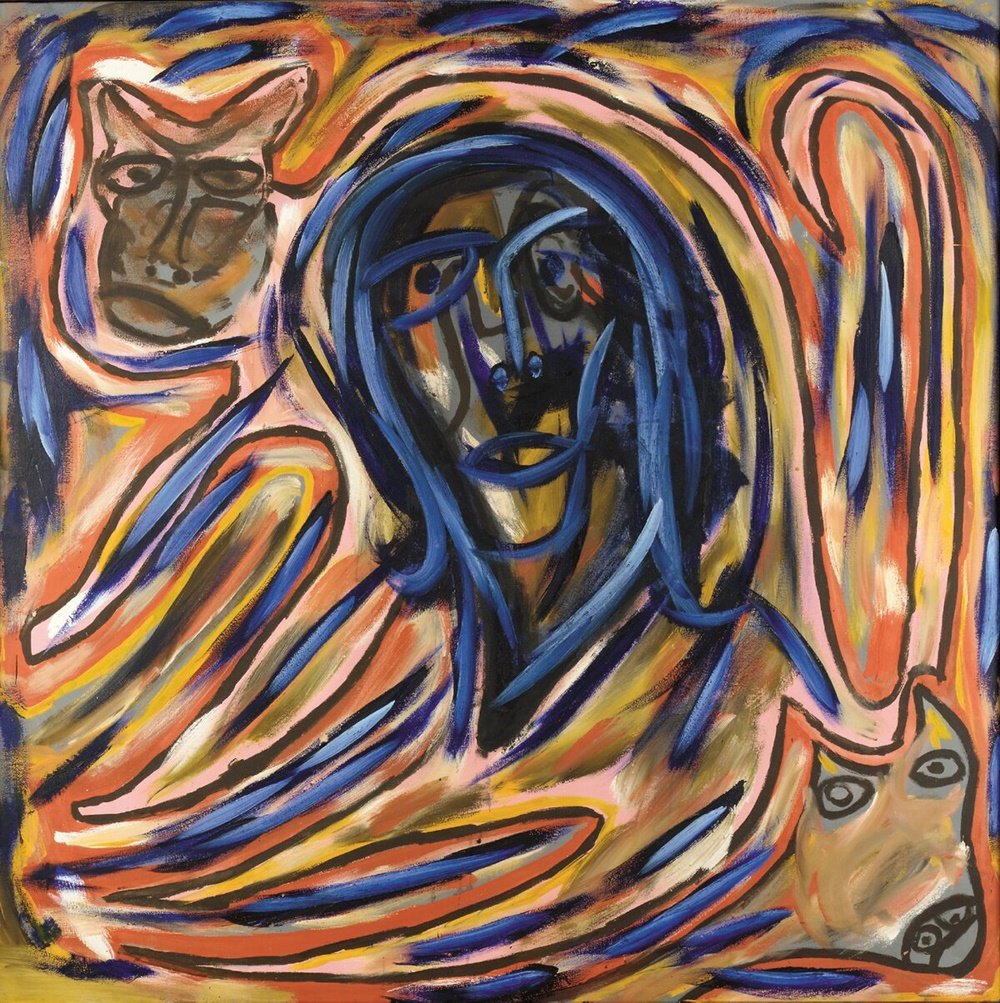
Thornton Dial, Woman with Tiger Cat (1990). Courtesy Christie’s.
Anderson contends that although the label “outsider artist” purports to describe anyone who did not receive formal training, it is often applied selectively to artists of color, and black artists in particular. He describes the pratice as “a habit that was formed years ago because [these artists] didn’t perform in the market. So I look at this as very much connected with their tepid reception in the market. And I think that is going to change.”
It is already changing. Fourteen of Dial’s top 15 auction prices were set in the past four years. His auction record, $41,250, was set at Christie’s in January for the mixed media work Equal Opportunity: Holding the Line (2002).
Among the lowest auction prices on record, meanwhile, is $438, far short of even the low end of the $2,000-to-$3,000 estimate, for Untitled (Woman), a charcoal and pastel on paper that Christie’s sold at an interiors sale in 2009. Of the 58 Dial auction results listed in the artnet Price Database, seven works failed to sell and one was withdrawn before the sale.
“Dial has been around for quite some time and he’s known as being the godfather or grandfather of a lot of the Southern vernacular artists,” said Cara Zimmerman, vice president and head of sale for outsider and folk art at Christie’s. But he has only developed an auction market over the past five years, as his profile has grown exponentially in the museum world.
“The fact that his work is at the Met right now is a tremendous opportunity for new audiences to understand more about it as well as the work of other artists operating in similar spheres,” she added.
On the Private Market
Dial’s presence on the primary market has been similarly spotty. Galleries including New York’s Ricco Maresca and Andrew Edlin, known for showing self-taught and outsider artists, organized a handful of shows over the years.
In 2015, toward the end of Dial’s life, high-profile contemporary art gallerist Marianne Boesky announced representation of the artist. She organized two shows before dropping him the following year, sources say. (A spokeswoman said that the gallery no longer works with Dial but would not confirm when or why they parted ways.)
Now, the New York-based David Lewis Gallery is working closely with the Dial family and expects to represent the estate once a formal entity is officially established. Earlier this year, the gallery organized a small survey show, “Mr. Dial’s America.”
The broader curatorial push to consider outsider artists alongside titans of the 20th century has done much to expand interest in Dial’s work, Lewis said. The artist “has always had dedicated collectors,” he told artnet News. But “interest was limited to a small circle of enthusiasts and prominent collectors, most of whom were not otherwise patrons of contemporary art.”
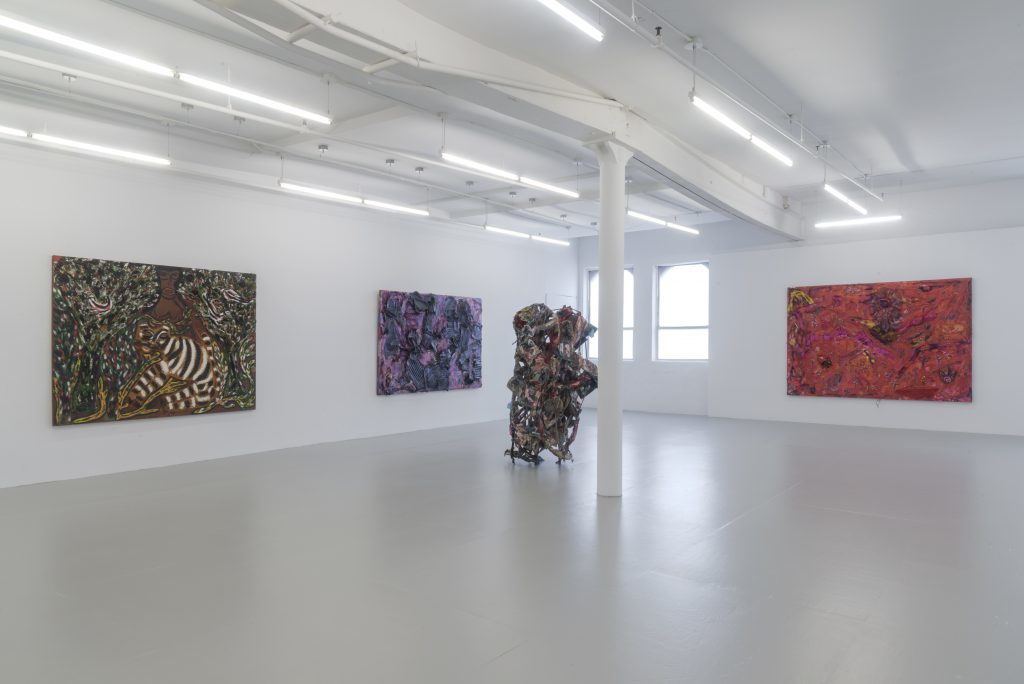
“Thornton Dial: Mr. Dial’s America,” installation view at “Thornton Dial: Mr. Dial’s America” at David Lewis Gallery. Photo courtesy of “Thornton Dial: Mr. Dial’s America” at David Lewis Gallery.
Now, that’s beginning to change. “As Dial is now widely understood to be a major American artist, we are seeing a rapid expansion of his circle of collectors to include patrons of contemporary art of all kinds, and at all levels,” Lewis said.
Dial is also unique among self-taught artists. Because so many start working late in life, their practices often don’t have time to evolve and form distinct periods. But Dial “was still a relatively young man when he came into contact with Bill Arnett and was convinced that he should be devoting more attention to his art, and not hiding it,” said Katherine Jentleson, a curator of folk and self-taught art at Atlanta’s High Museum of Art. (The museum was an early and enthusiastic supporter of Dial and currently has one of the largest holdings of his work.)
Dial’s oeuvre can generally be broken up into three periods, according to experts: the early allegorical works (1989–1993), of which tigers—symbolizing the resilience of African Americans in the face of oppression—are emblematic; modernist assemblages (mid-’90s–2008), which often function as history paintings; and, as Lewis describes it, “the very sculptural, very poetic late phase” from 2008 to 2016.
The price for major collages and mixed-media assemblages—none of which has made it to the auction block—averages around $200,000 to $300,000, Lewis told artnet News. Some major works, he said, have likely sold for more.
The Foundation’s Place
While Dial’s work was slowly gaining steam in the marketplace, it was already making waves in institutions. Starting with that major gift to the Met in 2014, the Souls Grown Deep Foundation, which owns more than 1,200 works by self-taught artists, began a multi-year program to transfer the majority of its holdings to leading American and international art museums.
The foundation took a cue from the “playbook that the Rauschenberg Foundation perfected, which is the gift/purchase model,” Anderson said. The foundation favors a combination of gift and sale “so that the museums that are acquiring works are committing themselves financially and with their board’s participation in a way that a straight gift doesn’t necessarily presume.”
While the foundation’s approach has quite successfully carved out a place for Dial and his peers in art history—the nonprofit’s priority—it has also, perhaps counterintuitively, constrained his private market. The most important, spectacular, and representative Dial works are all owned by the Souls Grown Deep Foundation, which plans only to place them with institutions.
To date, museums including the Met, the Fine Arts Museums of San Francisco, the High Museum of Art in Atlanta, and the Philadelphia Museum of Art have acquired more than 200 works by 75 artists from the collection. “In the next handful of years, we’ll have hundreds more works in dozens of museums,” Anderson said.
He credited a number of like-minded curators—including the Met’s Sheena Wagstaff and the National Gallery of Art curator Lynne Cooke, who organized the recent exhibition “Outliers and American Vanguard Art”—who have recognized the importance of Dial’s work and presented it without limiting labels.
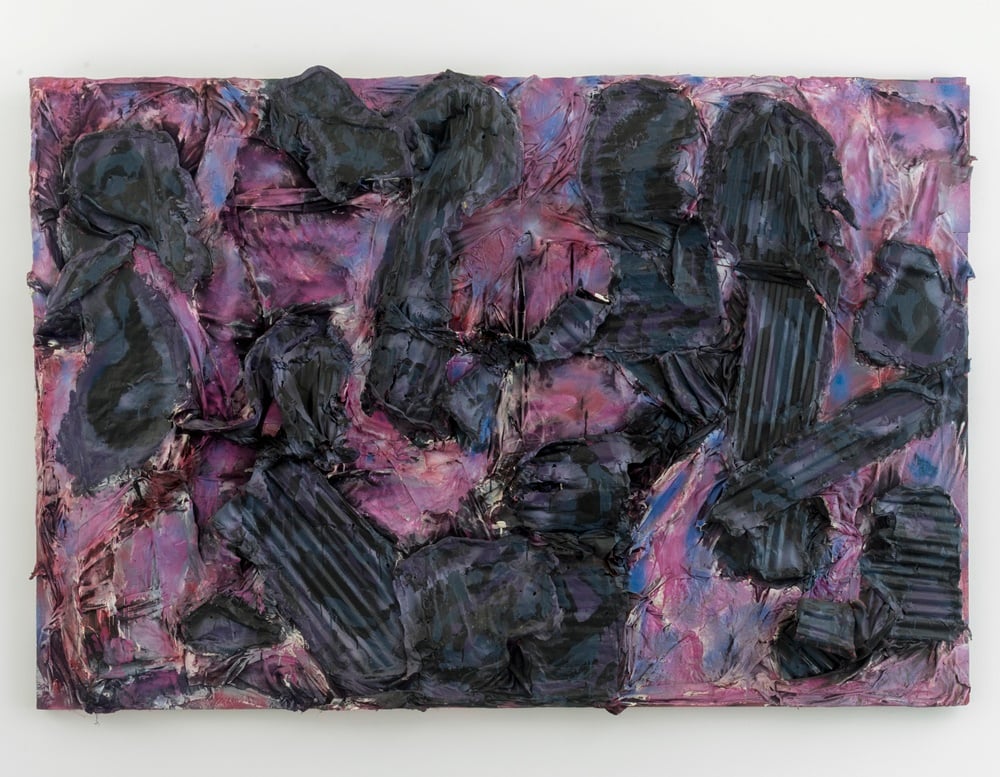
Thornton Dial, Black Walk (2003) Courtesy of David Lewis Gallery
However, not everyone believes these labels should be stripped out. “There is a challenge for us to think that self-taught is not a four letter word,” Jentleson said. “We’re entering an era where those kinds of modifiers are less and less necessary, but I don’t think they’re totally going to fall away. The modifier of being self-taught shouldn’t prevent them from entering Modern and contemporary art collections.”
This debate is hardly new. When Dial was included in the Whitney Biennial in 2000, “there was so much controversy even then about what to call” the work, Jentleson said.
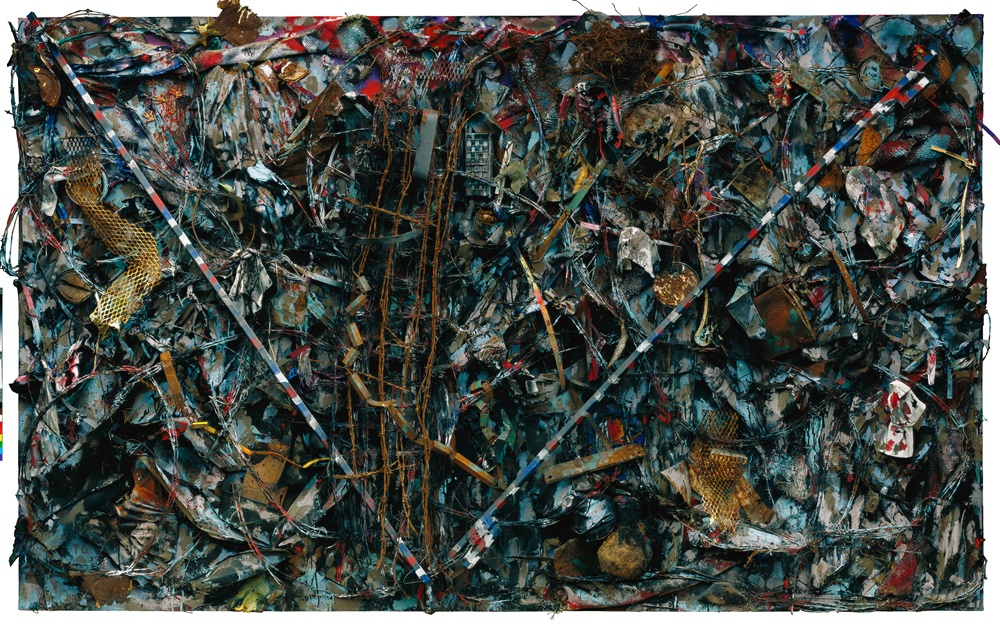
Thornton Dial, Victory in Iraq (2004). Metropolitan Museum of Art, New York, Gift of Souls Grown Deep Foundation from the
William S. Arnett Collection, 2014 © 2018 Estate of Thornton Dial / Artists Rights Society (ARS), New York
A Legacy Coming Into Focus
More than three decades have passed since Arnett was first struck by Dial’s use of found materials in 1987. The curator first showed the work out of his house in Buckhead, Georgia, but the number of visitors he was receiving soon required him to rent out larger spaces.
In 1993, a significant turning point in Dial’s career, the artist had a two-venue solo museum show at the New Museum and the Museum of American Folk Art in New York. A steady stream of major museum and gallery shows followed, including one in Atlanta in 1996 (which overlapped with the Summer Olympics there) and a traveling retrospective, “Hard Truths,” that premiered at the Indianapolis Museum of Art in 2011.
As far back as 25 years ago, experts were already anticipating the challenge of how to characterize Dial. In an essay for his New Museum show, curator Lowery Stokes Sims wrote: “It will be increasingly difficult to classify him simply as ‘folk,’ or ‘naive,’ or ‘outside,’ and thus Dial will forcefully challenge the hierarchical language that we bring to the discussion of various genres of art. A quiet revolution may indeed be in process, a revolution that may very well effect a reexamination and reconsideration of the centrality of the ‘outsider’ experience to mainstream art experience, namely the black experience to that of the American experience.”
While this shift was already in motion two decades ago, experts say it is picking up speed now. And while the art market has historically been more reluctant than institutions to give up on rigid categorization, this quiet revolution may find its way there soon, too.
“At long last [Dial is] being canonized as major American artist—and, crucially, on terms equal to any other major American artist,” Lewis said. “He is no longer ‘merely’ a heroic but marginal figure. Dial’s Victory in Iraq is hanging at the Met alongside Clyfford Still and across from Jackson Pollock.”
